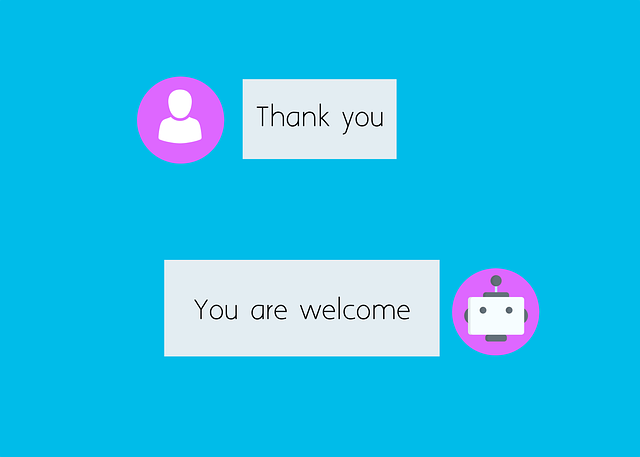Integrating an e-commerce chatbot requires careful consideration of both initial and ongoing costs to ensure a balanced and effective solution. The choice between purchasing off-the-shelf chatbot platforms like Dialogflow or Microsoft Bot Framework, or investing in advanced AI solutions such as GPT-3 or ChatGPT by OpenAI, depends on the specific needs and customization levels desired. Beyond selection, development and deployment involve significant investment to create a chatbot architecture that seamlessly integrates with your e-commerce system across various channels. This phase also involves personalizing interactions for different customer demographics and languages.
Maintaining and updating the chatbot is an ongoing necessity to keep it current with products, services, and evolving customer behaviors. Businesses must budget strategically for both setup and long-term maintenance. Developing an in-house chatbot offers control over intellectual property but requires a substantial investment in talent, design, machine learning expertise, and infrastructure, along with recurring expenses for upkeep. In contrast, subscription-based services through the SaaS model provide a cost-effective alternative without the need for large initial investments or specialized teams. They are scalable and can be customized to fit different budgets and requirements.
The decision to develop an in-house chatbot or subscribe to a service should align with a business's unique goals, technical capabilities, and financial planning. The integration of an AI-driven e-commerce chatbot not only affects operational efficiency by automating customer support but also offers indirect benefits such as insights into consumer preferences for personalized marketing and product selection. E-commerce businesses must evaluate the return on investment (ROI) by considering both direct costs, like software development and system integration, and indirect gains, including the savings from automated customer service and the strategic use of data collected from chatbot interactions. Ultimately, e-commerce chatbots are a valuable tool for improving customer satisfaction and operational efficiency, contributing to a business's competitive edge in the digital marketplace.
Exploring the financial landscape of integrating an AI chatbot into your e-commerce platform can be a strategic investment. This article delves into the multifaceted costs associated with deploying such a tool, offering clarity on the various factors that influence the price. From the initial development to opting for subscription-based services, we’ll break down the economic considerations of an e-commerce chatbot. Additionally, we’ll analyze the long-term return on investment and the cost implications, ensuring you’re well-equipped to make an informed decision about enhancing your online customer service experience.
- Understanding the Cost Factors of Implementing an E-Commerce Chatbot
- Breaking Down the Price Tags: Developing vs. Subscribing to an E-Commerce Chatbot
- Long-Term Investment Analysis: ROI and Cost Considerations for E-Commerce Chatbots
Understanding the Cost Factors of Implementing an E-Commerce Chatbot

When considering the integration of an e-commerce chatbot into your business operations, it’s crucial to weigh various factors that will influence the overall cost. The initial expense often includes the chatbot platform itself, which can be subscription-based with tiered pricing or a one-time purchase, depending on the complexity and customization level required. Platform choices range from off-the-shelf solutions like Dialogflow, Microsoft Bot Framework, or IBM Watson to more sophisticated, AI-driven platforms like GPT-3 or OpenAI’s ChatGPT.
Beyond the platform selection, costs are incurred during the development and deployment phase. This involves setting up the chatbot’s architecture, integrating it with your existing e-commerce platform, and ensuring seamless user interactions. The complexity of this integration can vary significantly based on the number of channels (website, social media, SMS, etc.) the chatbot will operate on, the level of personalization desired, and the extent of language support required for a multilingual customer base. Additionally, ongoing costs arise from maintaining and updating the chatbot to adapt to new products, services, or changes in customer behavior and preferences. These factors underscore the importance of a strategic approach when budgeting for an e-commerce chatbot, with considerations for both initial setup and long-term maintenance to ensure a cost-effective and scalable solution that enhances customer engagement and sales performance.
Breaking Down the Price Tags: Developing vs. Subscribing to an E-Commerce Chatbot

When considering the integration of an AI chatbot into your e-commerce operations, it’s crucial to understand the cost implications associated with developing one versus subscribing to a service. Developing an in-house e-commerce chatbot requires significant investment in both time and resources. This includes costs for programming talent, bot architecture design, machine learning expertise, and the infrastructure necessary to support the chatbot’s functionality. Additionally, ongoing maintenance, updates, and improvements will be factored into this price tag. The development route is best suited for businesses with unique requirements or those aiming to own the intellectual property outright.
On the other hand, subscribing to an existing e-commerce chatbot service can offer a more cost-effective solution. These services typically operate on a Software as a Service (SaaS) model, where you pay for access to the platform on a monthly or annual basis. This approach eliminates the need for in-house development teams and the initial capital investment associated with setting up a chatbot infrastructure. Subscription models often come with a range of predefined features and scalability options, allowing businesses to choose a plan that fits their e-commerce needs and budget constraints. Both routes have their merits, and the decision should be based on your specific business objectives, technical expertise, and financial considerations.
Long-Term Investment Analysis: ROI and Cost Considerations for E-Commerce Chatbots

Integrating an AI-driven chatbot into your e-commerce platform can be a strategic move with long-term financial implications. When assessing the return on investment (ROI) for such technology, it’s crucial to consider both the immediate and ongoing costs associated with its deployment. Initial setup expenses include software development, integration with existing systems, and training the AI model to handle the nuances of customer service within your e-commerce environment. These upfront costs are a significant factor in the total cost of ownership but represent just one part of the financial equation.
Over time, e-commerce chatbots can lead to substantial savings by reducing labor costs typically spent on customer support. They offer 24/7 availability, instant response times, and consistent service quality. The automation of routine inquiries allows human resources to be allocated more effectively to complex customer needs or strategic business initiatives. Moreover, the data collected from chatbot interactions can provide valuable insights into consumer behavior, enabling tailored marketing strategies and improved product offerings. When analyzing the long-term investment, businesses should evaluate not only the direct costs of implementation but also the indirect benefits of operational efficiency and enhanced customer satisfaction that can contribute to a healthier bottom line. Considering these aspects of cost and ROI, e-commerce chatbots present themselves as a cost-effective solution with scalable potential for businesses aiming to stay competitive in the digital marketplace.
In conclusion, the integration of an e-commerce chatbot into a business operation is a multifaceted investment that extends beyond the initial deployment costs. Factors such as customization, complexity, and scalability play pivotal roles in determining the overall expense. Entrepreneurs and businesses must weigh the development versus subscription models to find the most cost-effective solution for their specific needs. It’s evident that while the upfront investment for an e-commerce chatbot can vary widely, the long-term benefits and potential return on investment make it a compelling tool for enhancing customer engagement and streamlining operations. As businesses continue to navigate the digital landscape, an e-commerce chatbot emerges as not just a technological advantage but a strategic asset in the competitive arena of online retail.
